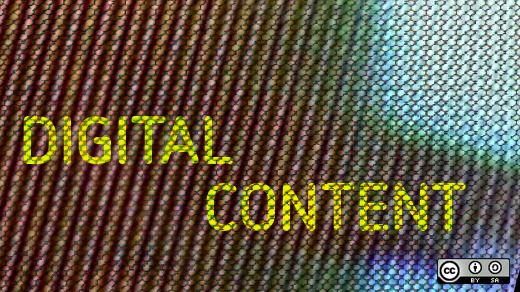Last weekend, I rented a movie through YouTube.
In the interest of full disclosure, I suppose I should tell you straight away that I don't own a television. I sold mine seven years ago, after the year 2003 saw the debut of Nashville Star, The O.C., Fame, and some train-wreck reality show starring Jessica Simpson and her then-husband Nick Lachey.
These days, my knowledge of television programming comes from disparate half-hours spent on the treadmill at the gym. I catch bits and pieces of shows like Law & Order, Hannah Montana, The Dr. Oz Show, One Tree Hill, The Doctors, and The Dr. Phil Show. (Who hired all the doctors, and am I the only one who wonders how many drinks the talent scout had when he signed Miley Cyrus?)
Friday morning, though, I was flipping past infomercials and talk shows when I spotted Jennifer Grey holding a giant watermelon: Dirty Dancing. I must have restarted the treadmill two or three times to see “just a little bit more” of the 80s classic before I was forced to retire to the locker room.
All weekend I wanted to watch the rest of the movie. Out of desperation, I pulled up YouTube on Sunday evening to watch a scene or two. A tiny ad appeared over one of the movie clips, offering me a YouTube rental of Dirty Dancing for $1.99.
I deliberated. Six months earlier, my husband and I wanted to rent a movie and decided that rather than drive out in search of a RedBox, we'd try Blockbuster's online rental option. Four hours later, the download bar was still inching along, the video hiccuped nonstop while trying to stream, and I was muttering some decidedly PG-13 words. I swore off online movie rentals when the iTunes rental store gave us a similar experience shortly thereafter. Both options rivaled a video rental store in price and gave an inferior product and service.
The $1.99 YouTube ad sucked me in. (Okay, also the promise of being able to walk around saying “Nobody puts Baby in a corner” for the next few days.) I punched in my Visa numbers and waited. To my surprise the movie started immediately, with minimal buffering pauses. After a few minutes, it was starting-and-stopping too much, so I paused it and headed to the kitchen to fix a snack. When I settled back in and hit “Play,” the movie played seamlessly. There were perhaps four or five brief moments of buffering for the rest of the 100 minute movie.
The digital content divide
YouTube rentals come with a built-in expiration date; 24 hours after the download, you lose access to the video. It's certainly a form of digital rights management (DRM), but not a nefarious one. You know exactly what you're getting when you pay for it: access to a movie for one day. And unlike Blockbuster or iTunes rentals, you actually have the opportunity to watch the movie during the rental period.
The problem with DRM has mostly come into play (ha, ha) with the purchase of digital content. That's because we all have a fairly similar understanding of what it means to own something: I can use it however I want to and sell it when I want to. Most of us are open to the idea of copyrighting; if a creative work is capable of being copied and resold without any revenue making its way back to the creator, we can understand why the creator would want to restrict those rights. (Whether we think they should do it is another matter.)
So when we purchase music, we expect to be able to convert it to a new file format that will play on hardware created in the future. We expect to be able to sell it to someone else when we're tired of it. We expect to be able to create back-up copies and play it on multiple devices: our computer, MP3 player, and SqueezeBox.
Classic DRM restricted or eliminated all of these. So people were—and are—rightly annoyed to be charged the same price for an inferior product.
Music has slowly been liberated from DRM; today, the only overwhelming ownership problem with music purchased from iTunes, for example, is that it's digitally marked with information telling who purchased it. This means you can't sell it without being liable if the next user bit-torrents it. There are also the obvious privacy issues that go along with having your purchases permanently tattooed with your name. (Plus does anyone actually trust the record labels not to use that information to further restrict our rights in the future? Check out that iTunes user agreement if you think that fear is farfetched.)
Movies and e-books are another story. Most remain embedded with the full array of crippling DRM, restricting users' rights to fair use, resale, file format conversion, and more. And with devices like the Kindle being subject to remote access and file removal by corporate overlords, it's hard not to feel a bit swindled. (If you think that is a violation of privacy and personal liberty, wait until you hear what the iPad can do. Good thing Apple lost this round of the Digital Millennium Copyright Act hearing on the legality of jailbreaking their phones, eh?)
The gap in services
The concept of digital movie rental is a near-perfect parallel to our existing (analog) method of video renting. With YouTube, the quality of the display is not equivalent, and that's reflected in the lower price. All things considered, I found it to be a good value, and I'll “rent” from YouTube again.
Digital content purchasing, from music to e-books, does not provide an equivalent experience to traditional CD or book buying. Often, the digital versions are priced similarly to their physical counterparts, but stunt our abilities to use the content as we always have. We know that the cost of production is at least marginally smaller, but instead of a lower price with the same rights to the content, we are offered a poor value and poorer excuses as to why.
Music has made strides in the right direction; the rest of copyrighted digital content lags miserably behind. But the question that the movie executives and digital content providers seem to miss is glaringly obvious to the rest of us: Does my product provide equivalent or greater value to consumers when I transform it into digital content?
If this question does not guide the shaping of future copyright protection mechanisms, the very methods intended to control profit-loss will only undermine the growth of the digital content industry.
Qui totum vult totum perdit.






2 Comments